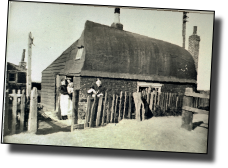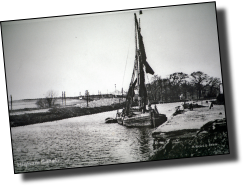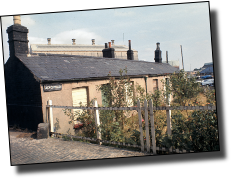Even though the canal itself came to a dead end at Higham, its story does not end there. As late as the 1930’s, Thames sailing barges were towed from Gravesend basin to what was then British Uralite, and to Dung Warf at Lower Highham, so called because this was the cargo brought back from the London streets to enrich the surrounding Kent fields.
Along the canal there were still several Bridge Houses and swing bridges allowing people to cross over to the railway bank. The old boathouse that stood along the canal made of an upturned boat and said to have given Dickens his inspiration for ‘Peggoty’s Boat House’ still remained. However for some reason the borough council at the time decided to move it and in the process destroyed it.
Eventually the canal was officially abandoned in 1934.
Then during the second world war, London’s bomb rubble was brought to fill in parts of the canal and the outer gate between the canal basin and the River Thames was damaged by enemy action.
In the late 1960’s and early 1970’s the lock leading from the basin into the canal and the canal from this point to Mark Lane, were filled in. A timber yard was built over the in-fill, which survived several years but since then the site has remained mainly derelict. In 1973 the Lock Cottages alongside the canal basin were demolished.



